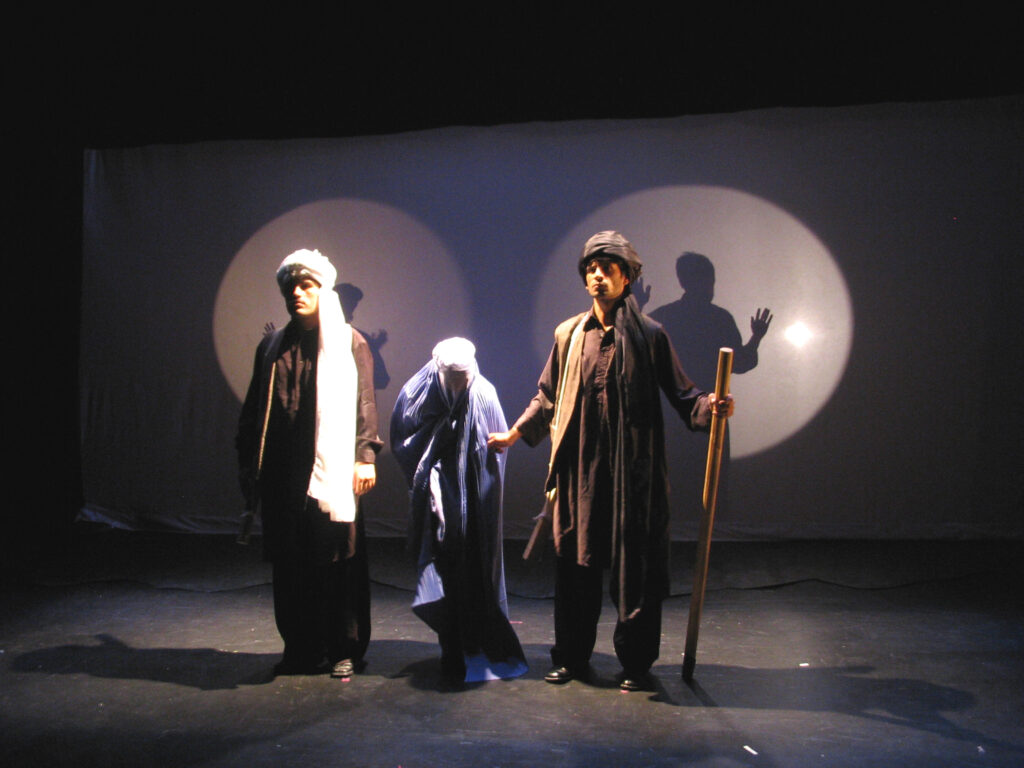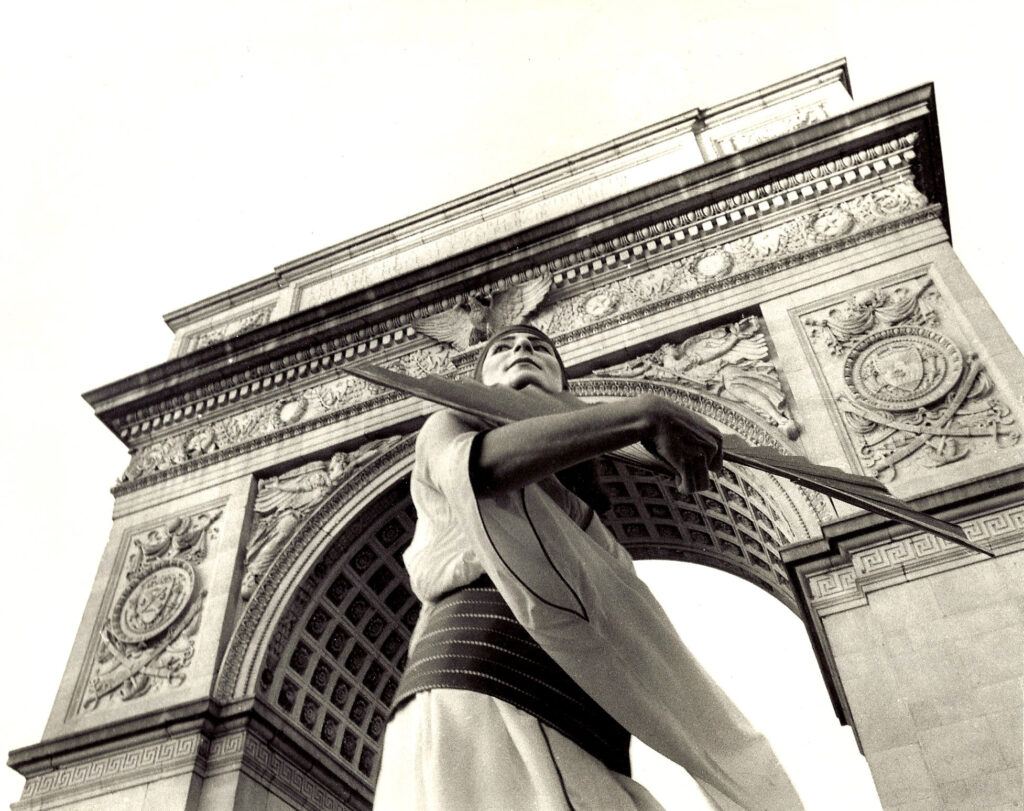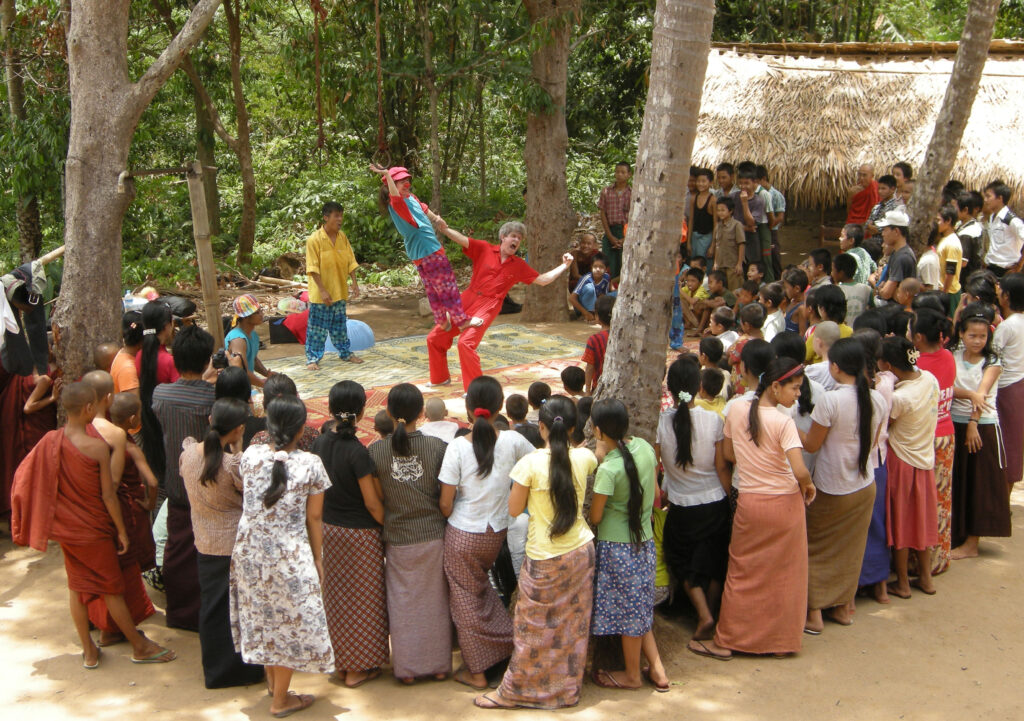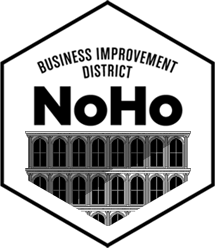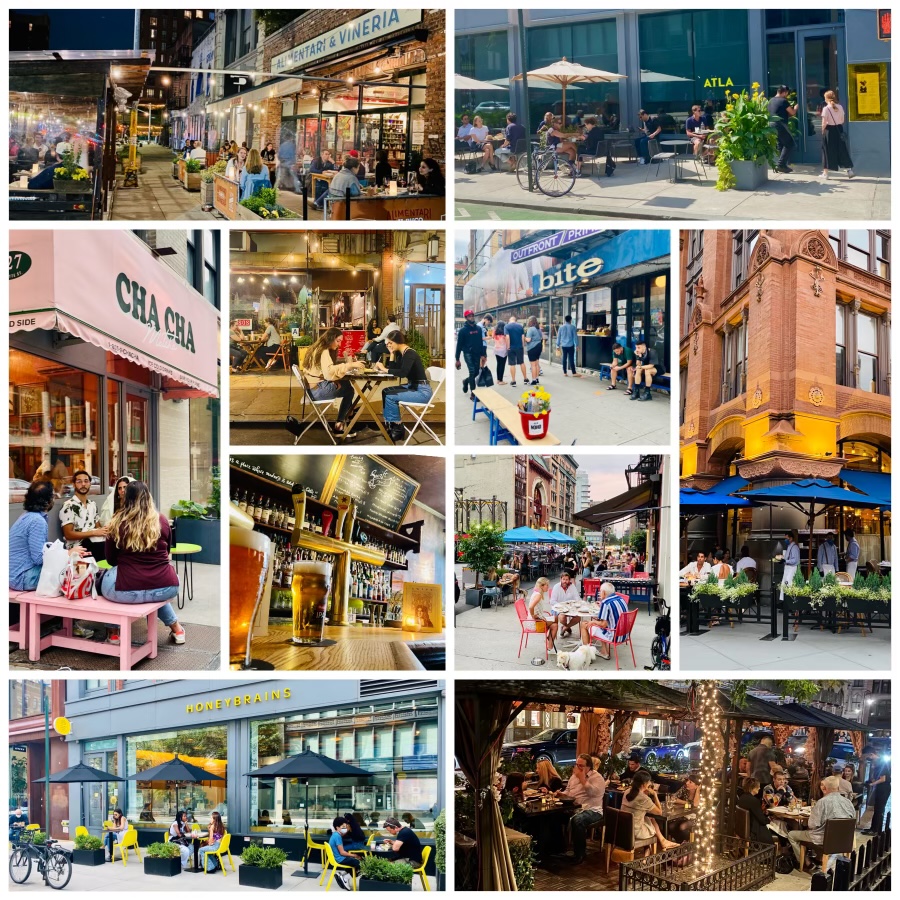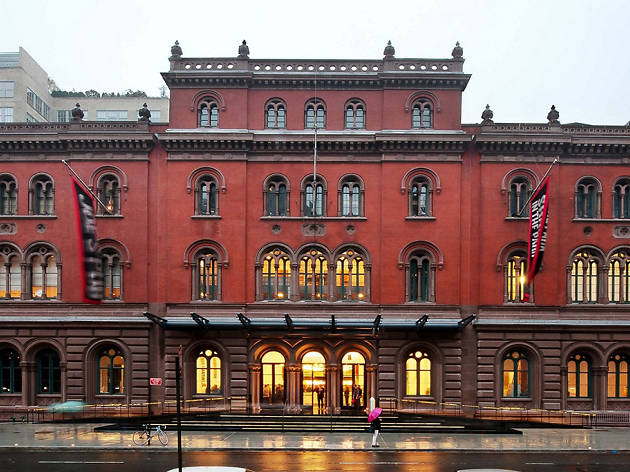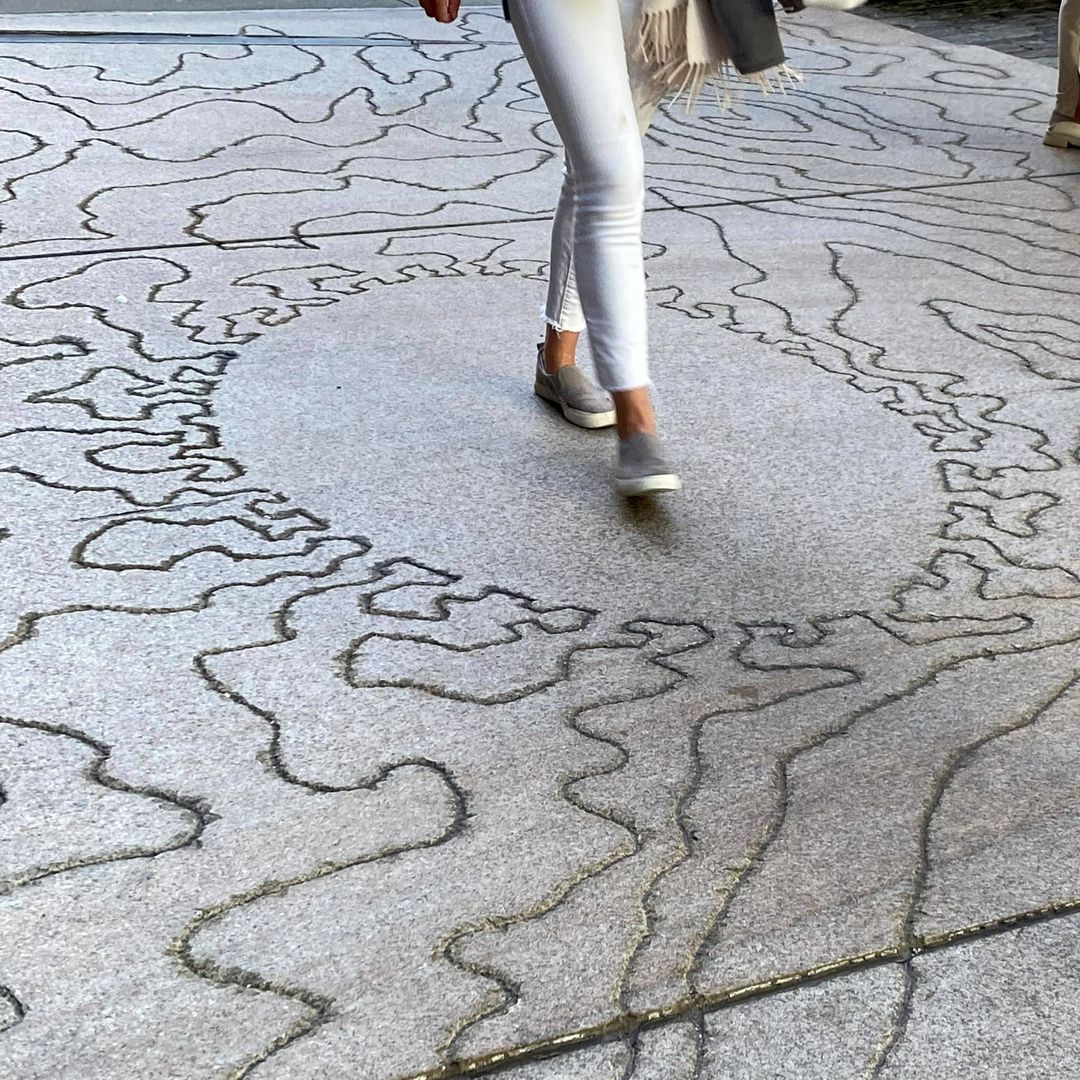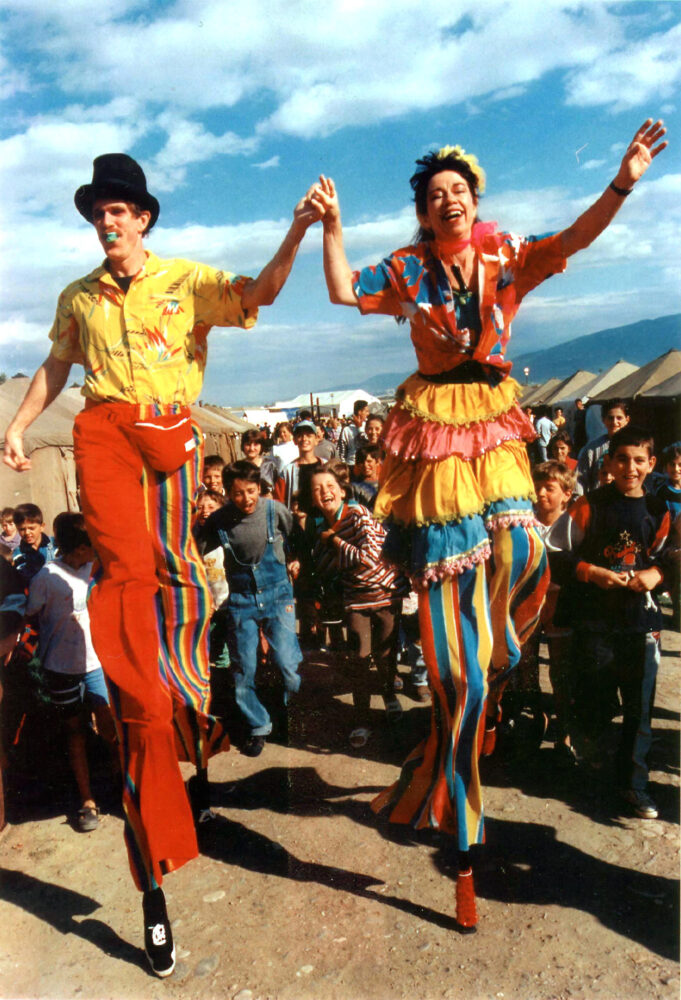
Roots from a tree spread throughout an entire garden, offering shade for other plants, habitat for animals, soil stability, and countless benefits. From NoHo, home to the Bond Street Theatre, roots of hope, stability, and care spread out to zones of crisis and conflict across the globe, offering extra support to help people, many among the most precarious on earth, flourish through creative expression.
For almost fifty years, this neighborhood nonprofit, helmed by Joanna Sherman and Michael McGuigan, has brought their unique model of “theatre for social development” to communities in conflict zones across the world. The ultimate goal is not just to put on a show, but to teach those with nobody else to help them how to use theater to amplify healing community messages. From Afghanistan in 2003 to the Balkans of the late 90s, East Berlin, Myanmar, and most recently in Palestine at the beginning of last year, the Bond Street Theatre has been there.
This wasn’t exactly what Joanna had in mind when she started the Bond Street Theatre in 1976. A fresh graduate of the Cooper Union, she found her home in the burgeoning creative community that was quickly filling the empty lofts of NoHo. The Off-Off Broadway scene had ushered in a new era for radical theater in New York City, and Joanna wanted to be part of it by bringing street theater into fruition, with a pointed focus towards social and environmental issues. She snagged a loft and, with a group of like-minded artists they came up with the name, and convinced La MaMa, located right down the street, to host them for a year as they explored a unique, people-focused political satire approach to producing theater. The highlight was “going where people are” through a city-funded theater in the parks program that took them all over the city, featuring shows full of live music, acting, and fun skills like juggling and stilt-walking.
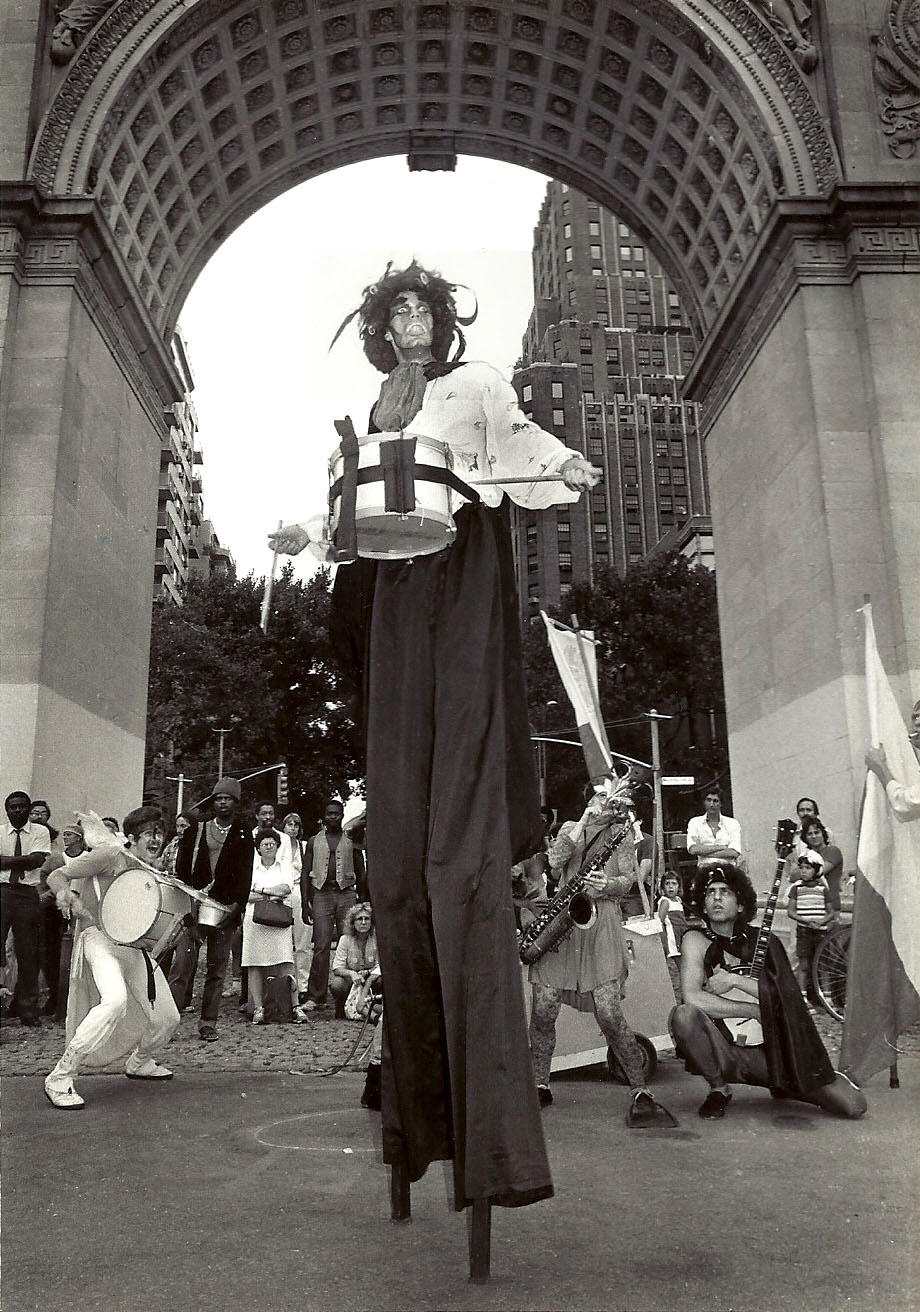
“At some point, we got some tours, with the first international performances in Spain,” Joanna recalls. However, the “epiphany moment” was in Jerusalem in 1984, following the 1982 Lebanon War. “They wanted us to do this program with all of the denizens of the city and create street pageants that would help revive the theatre and inspire the citizens.” They ended up creating four street pageants and Israel’s first inter-ethnic theatre company, comprised of Arabs, Kurds, Jewish people, Yemeni, and many more all working in peace and harmony. The project was a huge success, but more importantly, it showed the Bond Street Theatre that “theatre can bring people together” and inspire people to put aside superficial differences and create something larger and more beautiful together. Michael recalls that in the moment, they weren’t even thinking about the larger ramifications of what they were doing, but after they saw this new method work, that there was no going back.
At the same time, starting in 1983 they ran the Palenville Interarts Colony upstate that lasted for ten years, offering a creative countryside haven for interdisciplinary artists to focus their craft among a like-minded community. At the start. they were just excited to offer a space for folks to hone their craft, but the diverse group of artists, from “dancers, musicians, and actors and learned so much, and it was such an influence for what they began doing overseas,” Michael remembers. Unlike many artist colonies, it was deeply driven by community, and they held all kinds of events to engage the local residential community. With the epiphany in Jerusalem, paired with seeing the real impact every summer of taking an interdisciplinary approach to the arts and engaging community in Palenville, they had their lightbulb moment for the kind of work they wanted to do.
After ten years at the arts colony, they took a step back to spend more time developing their own work, and began traveling all over to perform at festivals, while noticing the many other unmet community needs. Joanna recalls a time in Brazil where they were set to play, but noticed the many street kids in the city weren’t allowed into the show, so the group threatened to not perform unless they opened up the festival to all. Slowly, they found their footing in the places that are really interesting and unique, and have some form of unmet community need.
Since then, they’ve brought theatre all over the world, mostly in conflict zones, usually to people who are experiencing intense hardship. The work, often taking place in military dictatorships, refugee camps, and places on the margins is a balancing act. While the Bond Street Theatre team might just be deported, the people they work with could be jailed or worse if things aren’t managed with tact and strong cultural sensitivities. Sometimes that means finding creative ways to offer social commentary, like depicting a conflict between animals instead of people, and sometimes it means finding the right niche for meaningful cultural expression. For example, in Afghanistan, they formed four all-women’s theatre groups, although it was (and still is) l a cultural taboo for women to perform in public in many places, particularly rural parts of the country. Figuring out the ways to implement isn’t always easy, and over the years they’ve become masters at cross cultural communication that’s allowed the Bond Street Theatre to bring their method around the world.
When the Bond Street Theatre comes in to a population to work, they’re inspiring people to do something they may never have thought they could do and to access parts of their personality that they didn’t know they had. “It really works, and you can really see the impact it has on people,” Joanna shares. It’s not easy though, and with so many ongoing sociopolitical conflicts around the world, they’ve spent years, even decades, in many countries, Michael adds that “it can be three weeks, or three years, but we like the projects best where we can really dig in and keep a sustainable relationship with the community,” where they can really make a difference.
While people all around the world are impacted by the methods and programs developed by the Bond Street Theatre, in NoHo, we’re lucky to call creative and caring folks like Joanna and Michael neighbors. Joanna recalls all the late nights spent wandering the neighborhood’s streets, visiting music venues, and the creative spontaneity of the neighborhood. While NoHo’s lost some of the rough-around-the-edges sensibility that defined much of Lower Manhattan in the 70s to the 90s, the creativity, the community, and the special NoHo sauce is still here. Michael recalls meeting the interesting people of the neighborhood like Keith the UPS guy, some of the NoHo BID’s Clean Team, building staff from down the block, two of them are Albanian, a country where the Bond Street Theatre has done work. “It’s a love-hate thing, the neighborhood’s changes have made things easier for us in certain ways, but I do miss the nitty gritty, the CBGB, the venues in and around NoHo. I do still love the neighborhood, and even now people from all over the world still know of NoHo as an intellectual and creative place, and it still has that pulsing creative energy.”
Locally, you can catch the Bond Street Theatre’s mobile troupes that pop up around the Five Boroughs, including the Shinbone Alley Stilt Band and Le Velo Rouge. In fact, you probably have seen these iconic, jazzy stiltwalkers at events throughout the City. However, most of us will never truly experience their work, since the roots of the Bond Street Theatre are global. But by bringing theatre and their model to people around the world, we’ll feel the impacts for generations to come through the artists they’ve inspired and the groundwork they’ve laid.
